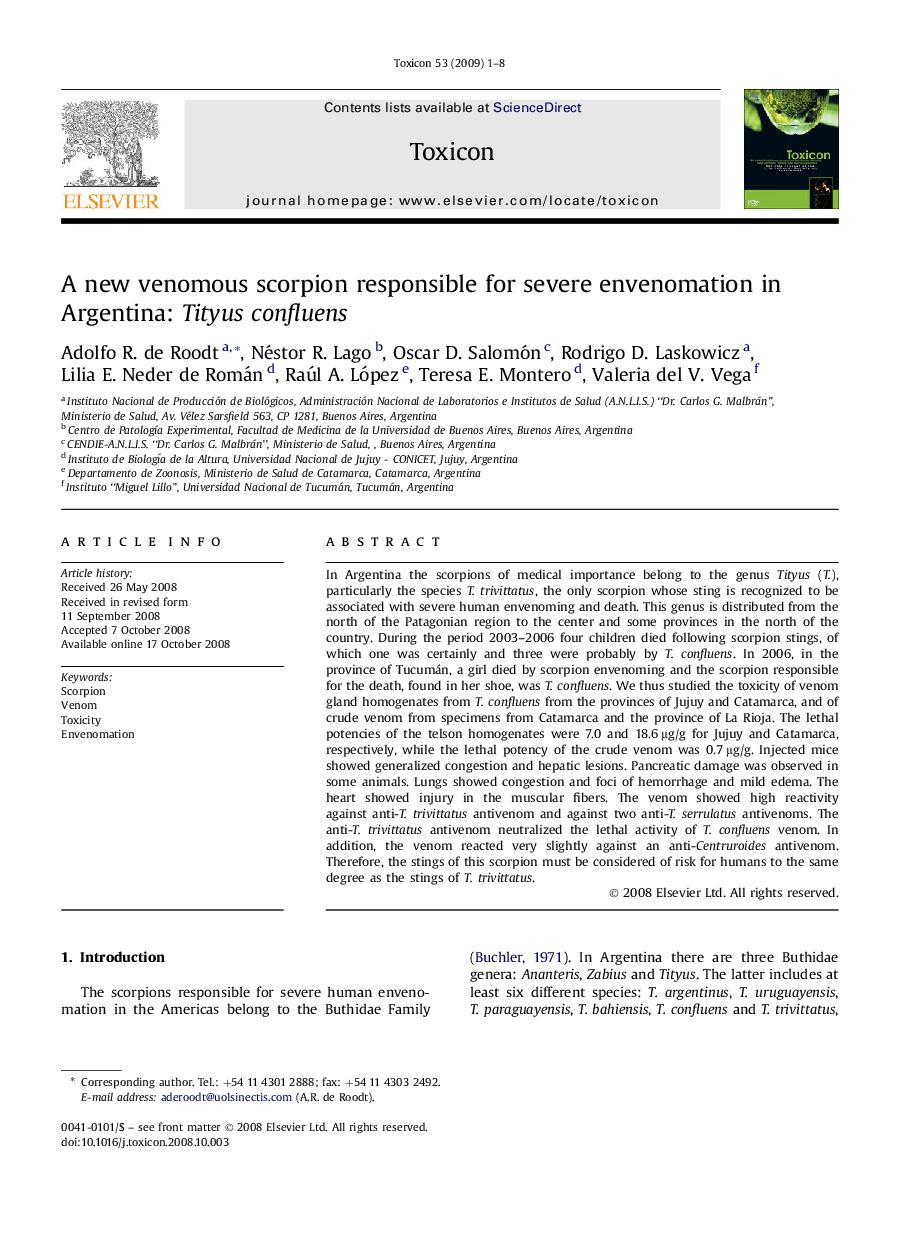| کد مقاله | کد نشریه | سال انتشار | مقاله انگلیسی | نسخه تمام متن |
|---|---|---|---|---|
| 2066487 | 1077189 | 2009 | 8 صفحه PDF | دانلود رایگان |

In Argentina the scorpions of medical importance belong to the genus Tityus (T.), particularly the species T. trivittatus, the only scorpion whose sting is recognized to be associated with severe human envenoming and death. This genus is distributed from the north of the Patagonian region to the center and some provinces in the north of the country. During the period 2003–2006 four children died following scorpion stings, of which one was certainly and three were probably by T. confluens. In 2006, in the province of Tucumán, a girl died by scorpion envenoming and the scorpion responsible for the death, found in her shoe, was T. confluens. We thus studied the toxicity of venom gland homogenates from T. confluens from the provinces of Jujuy and Catamarca, and of crude venom from specimens from Catamarca and the province of La Rioja. The lethal potencies of the telson homogenates were 7.0 and 18.6 μg/g for Jujuy and Catamarca, respectively, while the lethal potency of the crude venom was 0.7 μg/g. Injected mice showed generalized congestion and hepatic lesions. Pancreatic damage was observed in some animals. Lungs showed congestion and foci of hemorrhage and mild edema. The heart showed injury in the muscular fibers. The venom showed high reactivity against anti-T. trivittatus antivenom and against two anti-T. serrulatus antivenoms. The anti-T. trivittatus antivenom neutralized the lethal activity of T. confluens venom. In addition, the venom reacted very slightly against an anti-Centruroides antivenom. Therefore, the stings of this scorpion must be considered of risk for humans to the same degree as the stings of T. trivittatus.
Journal: Toxicon - Volume 53, Issue 1, January 2009, Pages 1–8